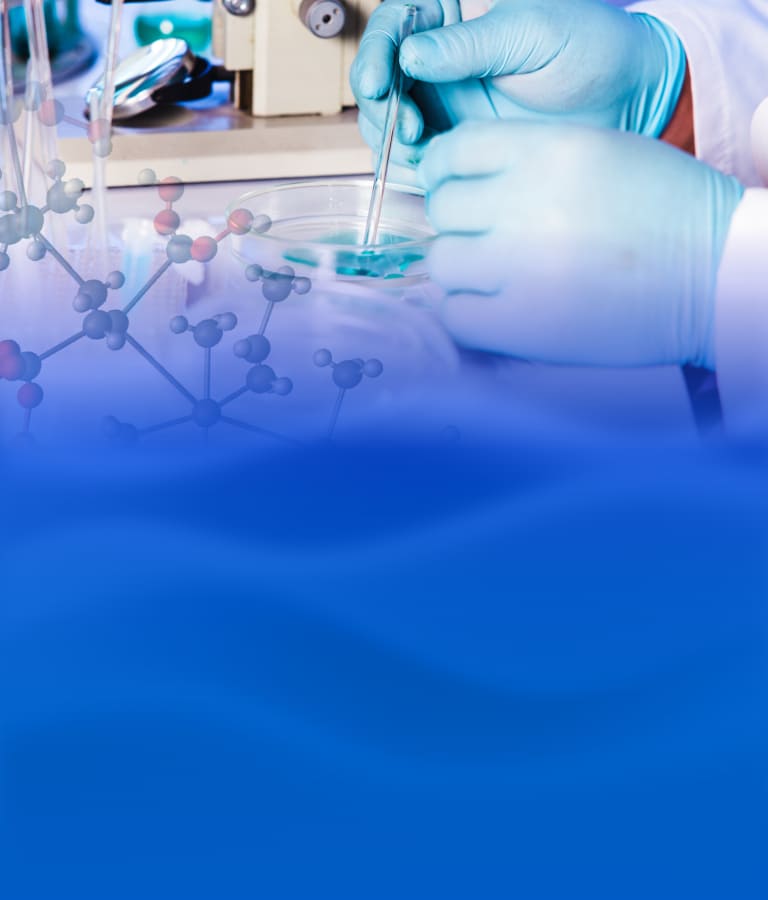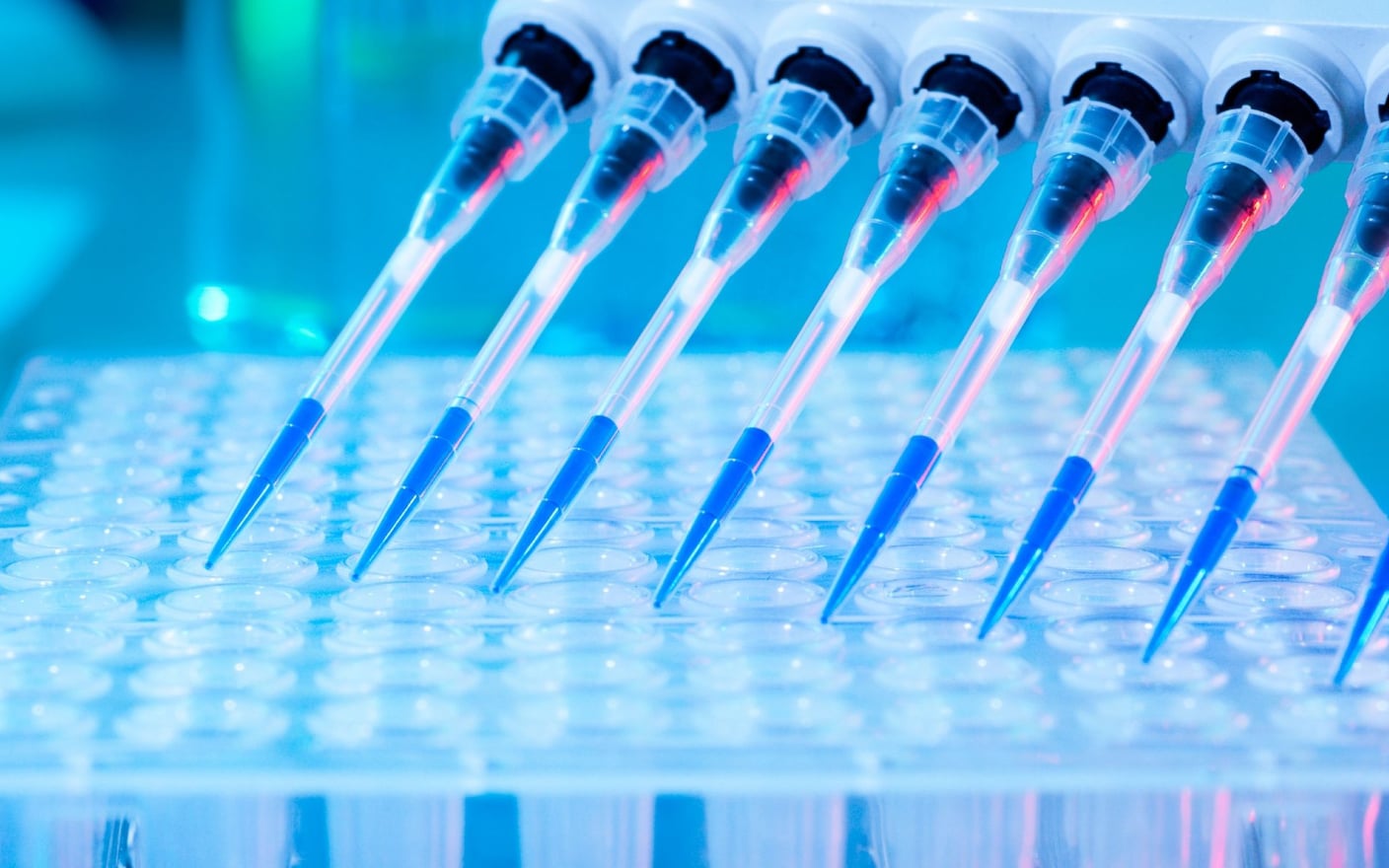New drug development is a complex, time-consuming, and challenging process, ultimately aimed at creating safe and effective therapeutics for humans. Before entering clinical trials, a series of preclinical studies is conducted to predict a drug's behavior in humans. Drug Metabolism and Pharmacokinetics (DMPK) is a critical discipline for evaluating a drug's absorption, distribution, metabolism, and excretion (ADME) in vivo. To enhance the translation of preclinical findings to clinical outcomes, human clinical pharmacokinetic (PK) characteristics can be predicted using in vitro and animal-derived PK data.
Accurate prediction of human PK properties is vital for drug development, clinical translation, and application. First, predicting absorption, distribution, and metabolism profiles aids in screening and optimizing candidate compounds, improving efficacy while mitigating adverse effects. Second, forecasting clinical PK properties guides the design of human dosing regimens, ensuring efficacy and safety during trials and treatment. Additionally, individual variability significantly impacts drug efficacy and safety; DMPK predictions can elucidate the sources of such variability, enabling personalized therapy and improved outcomes.
Methods for Predicting Human DMPK Parameters of Small Molecule Compounds
Advances in computational science and biotechnology have expanded the methods and models used in clinical PK prediction. Key approaches include:
Allometric scaling using animal data to predict human PK [2]
Physiologically Based Pharmacokinetic (PBPK) modeling [2]
Machine learning algorithms [3]
In Vitro-In Vivo Extrapolation (IVIVE) Prediction Methods
Cell Permeability and Transporter Assays for Human Absorption and Distribution Prediction
Cell models (e.g., Caco-2) assess drug permeability and transporter interactions to predict human absorption and distribution. For predicting oral PK of 18 drugs, Caco-2 apparent permeability (Papp) effectively estimated the absorption rate constant (ka) using[5]:

Where:
Papp: Caco-2 apparent permeability;
S: Absorption surface area (200 m2);
Vc: Central volume of distribution (predicted).
Caco-2 Papp also predicts fraction absorbed (Fa) from intestine to enterocytes[6]:

Where:
Peff (10-4 cm/s): Human jejunal permeability (balloon endoscopy);
Tres: Small intestine transit time (3 h);
R: Small intestine radius (2 cm).
In Vitro Metabolic Stability Assays for In Vivo Metabolic Clearance Prediction
In vitro liver metabolism data (e.g., human liver microsomes or hepatocytes) predict in vivo metabolic clearance. Using the well-stirred model, intrinsic hepatic clearance (CLint, liver) is scaled to human clearance (CL) (8):

Where:
Qh: Hepatic blood flow;
fu(b): Fraction unbound in blood;
CLint, liver: Intrinsic hepatic clearance; fu(inc): Fraction unbound in microsomes/hepatocytes.
For details, see the article Predicting In Vivo Metabolic Clearance Using In Vitro–In Vivo Extrapolation (IVIVE) Model: Why and How?
Protein binding is critical in IVIVE-based CL prediction. Traditional IVIVE performs well for most drugs but has limitations for highly protein-bound, low-clearance, or transporter-interacted compounds.
Recent mechanistic IVIVE methods address these gaps by incorporating:
Protein binding correction factors for free drug concentrations in hepatocytes.
In vitro protein binding experiments (plasma, microsomes).
pH-dependent adjustments (e.g., Berezhkovskiy’s equation for basic compounds).
Ion interactions between protein-drug complexes and cell surfaces (Poulin’s model) [9].
Table 1. Formulas for Predicting Clearance from In Vitro Enzyme Metabolism Data
IVIVE Method Type | Key Parameters | Formulas | Advantages | Limitations |
Traditional IVIVE | In vitro metabolism data, protein binding |
| Reliable for most drugs | Limited for high protein binding, low CL, or transporter substrates |
Berezhkovskiy’s Correction | pH-dependent free drug partitioning |
| Improved CL prediction for basic compounds | Primarily for basic compounds |
Poulin’s Mechanistic IVIVE | Ion interactions at cell surfaces |
| Accurate for low CL/high protein binding compounds | Complex implementation |
Rb/p: Blood-to-plasma ratio;
fu(p)−app: Apparent fraction unbound (pH-adjusted);
fu(liver): Liver fraction unbound (pH/protein-facilitated uptake).
These in vitro methods can provide preliminary predictions of a drug’s pharmacokinetic properties in humans, offering foundational data and guidance for further animal models and clinical research. However, it is important to note that in vitro methods can only provide initial predictions, and actual in vivo PK properties need to be verified and confirmed through animal models and clinical trials.
In Vivo Prediction Methods
Allometric Scaling for Human PK Parameter Prediction
Conduct pharmacokinetic experiments using animals such as mice, rats, dogs, and monkeys to evaluate the absorption, distribution, metabolism, and excretion of drugs in animals. Then, use allometric scaling to predict the PK characteristics in humans. Allometric scaling is based on anatomical, physiological, and biochemical similarities between preclinical species and humans, assuming that differences in pharmacokinetic characteristics among species mainly arise from differences in body weight and organ size. This is one of the earliest and most widely used methods for predicting human PK (Figure 1). Simple allometric scaling (SAS) is a basic allometric method that calculates parameters in the allometric equation using data from multiple species, then predicts data for other species. The formula for predicting clearance (CL) using simple allometric scaling is:


Figure 1. Predicting Human PK Parameters Using an Allometric Scaling Model [10]
However, simple allometric scaling cannot accurately predict the clearance rate of all drugs. To improve prediction accuracy, various improved methods have been developed, including the Rule of Exponents (ROE) correcting maximum lifespan potential (MLP) and brain weight (BrW), the fu-corrected intercept method (FCIM), single-species scaling (SSS), and two-species scaling (TS) (Table 2). Comparative studies by the Pharmaceutical Research and Manufacturers of America (PhRMA) found that the methods with higher prediction accuracy are the free compound intercept method and the rat-dog two-species scaling method (TSR-D)[11].
Table 2. Human Clearance (CL) Prediction Methods Based on Allometric Scaling [12]
Method | Description | Formula (mL/min) |
SASN≥2 | A simple allometric scaling method using at least two species' data | CL = a×(BW)b |
ROEN≥2 | ROE method using at least two species of data | If b < 0.55 or b > 1.3, not applicable. If 0.55 < b ≤ 0.71, simple allometric scaling. If 0.71 < b ≤ 1, CL×MLP = a×(BW)b; If 1 < b ≤ 1.3, CL×BrW = a×(BW)b |
FCIMR | Free drug fraction corrected intercept method using rat data | CL_human = 33.35×(a/Rfu)^0.770, Rfu= fup_rat/fup_human |
FCIMD | Free drug fraction corrected intercept method using dog data | CL_human = 33.35×(a/Rfu)^0.770, Rfu= fup_dog/fup_human |
FCIMM | Free drug fraction corrected intercept method using monkey data | CL_human = 33.35×(a/Rfu)^0.770, Rfu= fup_monkey/fup_human |
SSSR | Single-species scaling method using rat data | CL_human/fup_human= CL_rat/fup_rat×(70/0.25)0.75 |
SSSD | Single-species scaling method using dog data | CL_human/fup_human= CL_dog/fup_dog×(70/10)0.75 |
TSR,D | Two-species scaling method using rat and dog data | CL_human = a(rat-dog)×(BW_human)0.628 |
TSR,M | Two-species scaling method using rat and monkey data | CL_human = a(rat-monkey)×(BW_human)0.650 |
BrW: Brain weight; MLP: Maximum lifespan potential.
Steady-state apparent volume of distribution (Vss) is an important parameter for measuring drug distribution in tissues. Allometric scaling is also applicable for predicting Vss. Studies show that results vary little when using multiple or single species for allometric scaling. In the early discovery phase of new drugs, data from a single animal species can be used to predict human Vss to improve screening efficiency (Table 3).
Table 3. Prediction Methods for Human Steady-State Apparent Volume of Distribution (Vss) Based on Allometric Scaling [13]
Method | Description | Formula (L/kg) |
V-SA | Allometric scaling for Vss prediction | Vss = a×(BW)b |
V-SAfup | Allometric scaling corrected for plasma protein binding | Vss/fup = a×(BW)b |
V-SSSrat | Single-species scaling method using rat data | Vss (human)/fup = Vss (rat)/fup |
V-SSSdog | Single-species scaling method using dog data | Vss (human)/fup = Vss (dog)/fup |
Øie-Tozer Method
The Øie-Tozer model is semi-mechanistic, a term used in pharmacokinetics and pharmacodynamics to describe a method that combines features of mechanistic and empirical models. The Øie-Tozer model is primarily used to predict the tissue-plasma partition ratio of drugs in the body. It is based on integrating preclinical animal species data, designed to describe drug behavior in different physiological environments through simple mathematical formulas. The model assumes that the unbound fraction in human tissues (fut) is equal to that in animal models, allowing researchers to infer human pharmacokinetic characteristics using existing animal experimental data. [13]
Table 4. Predicting Vss Using the Øie-Tozer Model
Method | Assumption | Formula (L/kg) |
Øie-Tozer | Human tissue unbound fraction (fut) equals animal species fut: fut (average preclinical species) = fut (human). The fut in animal species at steady state is calculated using the following formula: fut (animal) = (Vr×fup)/(Vss (animal species)-Vp-(fup×Ve)-[(1-fup)×RE/I×Vp]) | Vss (human) = Vp+(fup×Ve)+[(1−fup)×RE/I×Vp]+Vr×fup/fut(human) |
Here, Ve is the extracellular fluid volume, Vp is plasma volume, Vr is residual fluid volume, RE/I is the ratio of binding protein in extracellular fluid to binding protein in plasma. Vp (L/kg) = 0.0313, 0.0313, 0.0515, 0.0448, and 0.0436 correspond to mouse, rat, dog, monkey, and human, respectively. Ve (L/kg) = 0.265, 0.265, 0.216, 0.208, and 0.151 correspond to mouse, rat, dog, monkey, and human, respectively. RE/I = 1.4. Vr (L/kg) = 0.364, 0.364, 0.450, 0.485, and 0.380 correspond to mouse, rat, dog, monkey, and human, respectively.
PBPK Method for Predicting Vss
Aside from the semi-mechanistic Øie-Tozer model, physiologically based pharmacokinetic (PBPK) models also perform well in predicting Vss. PBPK is a mathematical model used to simulate and predict the absorption, distribution, metabolism, and excretion of drugs within a biological system. This method is based on physiological and anatomical data combined with the chemical properties of the drug, establishing models suitable for humans or animals. By integrating in vivo and in vitro data, PBPK models can provide more accurate predictions of a drug's pharmacokinetic properties in vivo (Table 5). [14]
Table 5. Predict Vss using the PBPK model
Method | Assumption | Formula (L/kg) |
PBPK Model (Lukacova Formula) | Experimental data (Log D, fup, BPR) are used individually or in combination as input parameters to predict tissue-plasma ratio (Kp), which is then used to calculate Vss. |
|
Here, Vp is plasma volume; Ve is red blood cell volume (Vblood-Vp); E/P is red blood cell-plasma ratio, calculated by hematocrit/(1- hematocrit); Kpi and Vi are tissue-plasma distribution ratio and volume for the i-th tissue, respectively.
Computational Simulations
With the advancement of artificial intelligence (AI), researchers have begun exploring the direct establishment of relationships between compound structures and pharmacokinetic parameters. Consequently, AI models have been developed and trained to predict clearance rates, distribution volumes, and other parameters from compound structures. For instance, using the ADMET Predictor® software, one can input a compound's structure and use built-in AI models to predict human apparent distribution volume, intrinsic clearance in microsomes or hepatocytes, and more. [16]
Prediction Case: Human Pharmacokinetic Parameter Prediction for MRTX-849
MRTX-849 (Krazati) is a KRAS G12C mutation inhibitor developed by Mirati Therapeutics, primarily for treating non-small cell lung cancer (NSCLC) patients with the KRAS G12C mutation. Here, we use various in vitro and in vivo methods to predict the human pharmacokinetic parameters of MRTX-849, comparing them with clinical PK data.
The prediction mainly employed quantitative systems pharmacology (QSP) combined with the GastroPlus® PBPK model. Initially, allometric scaling was used to predict the clearance rate of MRTX-849 after intravenous administration in humans. Different methods were used to predict human clearance (CL) (see Table 6), showing that the TSR,D method's predicted clearance was closest to the ROE method result.
Table 6. Predicted Clearance (CL) of MRTX-849 in Humans Using Different Methods
Method | CL (human) (mL/min/kg) |
ROEN≥2 | 4.63 |
FCIMR | 8.27 |
FCIMD | 8.27 |
SSSR | 16.9 |
SSSD | 14.4 |
TSR,D | 6.71 |
Different methods were also used to predict the human apparent distribution volume (Vss), showing that the Øie-Tozer method’s predicted Vss was closest to the GastroPlus® software’s Lukacova formula result (see Table 7).
Table 7. Predicted Apparent Distribution Volume (Vss) of MRTX-849 in Humans Using Different Methods
Method | Vss (human) (L/kg) |
V-SA | 30.7 |
V-SAfup | 26.0 |
V-SSS_rat | 15.0 |
V-SSS_dog | 18.6 |
Øie-Tozer | 12.3 |
PBPK Model (Lukacova Formula) | 7.2 |
Summary: In constructing the PBPK model, clearance data from the ROE method and distribution volume data from the Lukacova formula were utilized, yielding accurate predictions of human intravenous PK parameters. Subsequently, the GastroPlus® IV PBPK model and actual preclinical animal pharmacokinetic data were combined to build and optimize a prediction model, which was then used to predict the oral PK parameters of MRTX-849 in humans. Notably, the differences between predicted and measured values were within twofold, demonstrating the high accuracy and reliability of our methods (Figure 2).

Figure 2. Plasma Concentration-Time Curve of 200 mg Oral MRTX-849 Predicted Using Quantitative Systems Pharmacology (QSP) Combined with GastroPlus® Software
Discussion and Conclusion
Human PK prediction for small molecules is indispensable in drug development and clinical applications. It streamlines candidate screening/optimization, reduces costs/failure rates, and guides clinical dosing (Figure 3). WuXi AppTec DMPK teams leverage computational models and experimental data to support human PK predictions across development stages, accelerating the advancement of candidates with favorable PK properties.

Figure 3. Pharmacokinetic models are used to predict human drug exposure based on preclinical data [17]
Authors: Yan Pan, Yunyi Yan, Liping Ma, Lijuan Hou, Jing Jin
Talk to a WuXi AppTec expert today to get the support you need to achieve your drug development goals.
Committed to accelerating drug discovery and development, we offer a full range of discovery screening, preclinical development, clinical drug metabolism, and pharmacokinetic (DMPK) platforms and services. With research facilities in the United States (New Jersey) and China (Shanghai, Suzhou, Nanjing, and Nantong), 1,000+ scientists, and over fifteen years of experience in Investigational New Drug (IND) application, our DMPK team at WuXi AppTec are serving 1,600+ global clients, and have successfully supported 1,700+ IND applications.
Reference
1. Obach RS, Baxter JG, Liston TE, Silber BM, Jones BC, Macintyre F, et al. The prediction of human pharmacokinetic parameters from preclinical and in vitro metabolism data. Journal of Pharmacology and Experimental Therapeutics. 1997; 283(1):46–58.
2. Miller NA, Reddy MB, Heikkinen AT, Lukacova V, Parrott N. Physiologically Based Pharmacokinetic Modelling for First-In-Human Predictions: An Updated Model Building Strategy Illustrated with Challenging Industry Case Studies. Clin Pharmacokinet. 2019 Jun 7; 58(6):727–46.
3. Gruber A, Führer F, Menz S, Diedam H, Göller AH, Schneckener S. Prediction of Human Pharmacokinetics From Chemical Structure: Combining Mechanistic Modeling with Machine Learning. J Pharm Sci. 2024; 113(1):55–63.
4. Technical Guidelines for Model-Guided Drug Development, Dec. 2020.NMPA.
5. Usansky HH, Sinko PJ. Estimating human drug oral absorption kinetics from Caco-2 permeability using an absorption-disposition model: Model development and evaluation, and derivation of analytical solutions for ka and Fa. Journal of Pharmacology and Experimental Therapeutics. 2005; 314(1):391–9.
6. Krishna R, Yu L, editors. Biopharmaceutics applications in drug development. Springer Science & Business Media; 2007 Sep 20.
7. Sun D, Lennernas H, Welage LS, Barnett JL, Landowski CP, Foster D, et al. Comparison of human duodenum and Caco-2 gene expression profiles for 12,000 gene sequences tags and correlation with permeability of 26 drugs. Pharm Res. 2002; 19(10).
8. Riley RJ, McGinnity DF, Austin RP. A unified model for predicting human hepatic, metabolic clearance from in vitro intrinsic clearance data in hepatocytes and microsomes. Drug Metabolism and Disposition. 2005; 33(9).
9. Choi GW, Lee YB, Cho HY. Interpretation of Non-Clinical Data for Prediction of Human Pharmacokinetic Parameters: In Vitro-In Vivo Extrapolation and Allometric Scaling. Pharmaceutics. 2019 Apr 5; 11(4):168.
10. Jones G, Zeng L, Kim J. Application of Allometric Scaling to Nanochelator Pharmacokinetics. ACS Omega. 2023; 8(30):27256–63.
11. Ring BJ, Chien JY, Adkison KK, Jones HM, Rowland M, Jones R Do, et al. PhRMA CPCDC initiative on predictive models of human pharmacokinetics, part 3: Comparative assessment of prediction methods of human clearance. J Pharm Sci. 2011; 100(10).
12. Liu D, Song H, Song L, Liu Y, Cao Y, Jiang J, et al. A unified strategy in selection of the best allometric scaling methods to predict human clearance based on drug disposition pathway. Xenobiotica. 2016; 46(12).
13. Jones R Do, Jones HM, Rowland M, Gibson CR, Yates JWT, Chien JY, et al. PhRMA CPCDC initiative on predictive models of human pharmacokinetics, part 2: Comparative assessment of prediction methods of human volume of distribution. J Pharm Sci. 2011; 100(10).
14. Petersson C, Papasouliotis O, Lecomte M, Badolo L, Dolgos H. Prediction of volume of distribution in humans: analysis of eight methods and their application in drug discovery. Xenobiotica. 2020; 50(3).
15. Murad N, Pasikanti KK, Madej BD, Minnich A, McComas JM, Crouch S, et al. Predicting volume of distribution in humans: Performance of in silico methods for a large set of structurally diverse clinical compounds. Drug Metabolism and Disposition. 2021; 49(2).
16. Sohlenius-Sternbeck AK, Terelius Y. Evaluation of ADMET Predictor in Early Discovery Drug Metabolism and Pharmacokinetics Project Work. Drug Metabolism and Disposition. 2022; 50(2).
17. Davies M, Jones RDO, Grime K, Jansson-Löfmark R, Fretland AJ, Winiwarter S, et al. Improving the Accuracy of Predicted Human Pharmacokinetics: Lessons Learned from the AstraZeneca Drug Pipeline Over Two Decades. Trends Pharmacol Sci [Internet]. 2020; 41(6):390–408. Available from: http://doi.org/10.1016/j.tips.2020.03.004
Related Services and Platforms




-

 In Vitro ADME ServicesLearn More
In Vitro ADME ServicesLearn More -

 In Vivo PharmacokineticsLearn More
In Vivo PharmacokineticsLearn More -

 Physicochemical Property StudyLearn More
Physicochemical Property StudyLearn More -

 Permeability and Transporter StudyLearn More
Permeability and Transporter StudyLearn More -

 Drug Distribution and Protein Binding StudiesLearn More
Drug Distribution and Protein Binding StudiesLearn More -

 Metabolic Stability StudyLearn More
Metabolic Stability StudyLearn More -

 Drug Interactions StudyLearn More
Drug Interactions StudyLearn More -

 Rodent PK StudyLearn More
Rodent PK StudyLearn More -

 Large Animal (Non-Rodent) PK StudyLearn More
Large Animal (Non-Rodent) PK StudyLearn More -

 Clinicopathological Testing Services for Laboratory AnimalsLearn More
Clinicopathological Testing Services for Laboratory AnimalsLearn More -

 High-Standard Animal Facilities and Animal WelfareLearn More
High-Standard Animal Facilities and Animal WelfareLearn More -

 Preclinical Formulation ScreeningLearn More
Preclinical Formulation ScreeningLearn More
Stay Connected
Keep up with the latest news and insights.




















